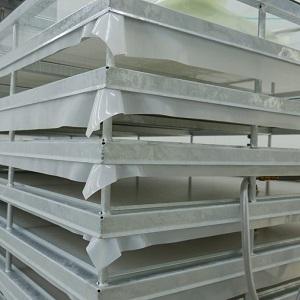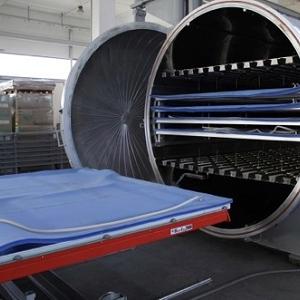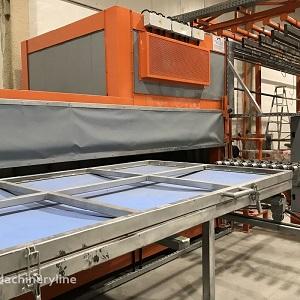Installation Guide of Silicone Diaphragm for Solar Panel Lamination
Installation Guide
The following guidelines are based on our observations and experiences in the Solar Industry and we try to give you assistance based on best practice.
Receipt, Inspection And Storage
• Goods inward inspection should be carried out as soon as the products arrive from Durney.
• Check the condition of the ordered Membrane, sizes and quantity supplied.
• Each Membrane is allocated a unique and fully traceable batch number. Apart from being one of the 6S management - this item can be fully traced back to the raw material batch used; the production date and final inspection process. Therefore in the unlikely event of a problem it is vital that you quote this traceable batch number.
• Store Membranes inside the original packaging. Do not place heavy objects on the packaging.
• Store in dry, clean conditions and in temperatures as near ambient as possible, away from direct sources of heat such as boilers, radiators and direct sunlight.
• Generally in accordance with ISO9001 and if stored as above, a minimum shelf life of 10 years can be considered.
Before/During Assembly
• Switch the laminator to the “Manual” mode of operation.
• Ensure no modules located in laminator or on the conveyor belts.
• Remove old membrane.
• Load Membrane with the fabric impression (matt textured) face down against the module surface.
• It is vital that Lami-6 Membranes are loaded with the black coloured EVA and Acid resistant face down against the module surface.
• Further protection and life expectancy can be guaranteed by inserting a PTFE / Fabric release sheet between the membrane and module. See service and maintenance notes below.
• Place the new membrane spread out on the heating plate and heat laminator to 140°C for approx. 30minutes.
• Flatten the membrane out and heat again for 30minutes.
• A total of at least 1 hour can prevent wrinkles caused by insufficient stretching.
• After heating the membrane needs to be stretched by about 1% to effect installation.
Install in accordance with the Manufacturers Instructions
- taking care to ensure the following:
• Not to pull the membrane too tightly.
• Ensure it is tensioned sympathetically.
• Do not subject the membrane to heavy tensile loading.
• To recognize if any long-hole formation (bearing stress).
• Ensure the membrane is not sagging.
• That threaded bolts are aligned with respective bolt holes of the laminator cover.
• Maybe worth ensuring that the top chamber is always set at vacuum so when opened this will keep the membrane lifted by vacuum and stop it sagging.
• That screws are not over torqued.
• Check that vacuum in top and bottom chambers is appropriate to the membrane - excessive pressure can seriously overload the membrane and shorten its life expectancy.
• Never try to operate vac or press without ensuring the holding / fixing arrangements are properly fixed / tightened.
• It is important to follow prescribed instructions or it may shorten the life expectancy of the membrane.
• Whilst installing a membrane try and maintain a slight 2% droop angle.
• After installation it may need several closures to check that the membrane is not wrinkled & has created a good vacuum seal. If a wrinkle or sag of more than 2% is observed, stretch the blanket and rectify accordingly.
• Remember the “variables” in the lamination process -temperature; time; pressure (upper & lower chambers) +type of encapsulant. All of these aspects could have an affect on the membrane performance.
• Ensure at all times that when the top chamber is closing it should be at VAC position. Ensure that sag / droop / extra blanket should not get stuck between top and bottom chamber.
• Blanket can be stretched between 3 to 5% depending upon the length and width of the membrane.
• In the laminator if the stretching is achieved by the cylinder ensure the correct pressure is set to achieve the required stretching.
• If everything is good to go, commence production.
Service & Maintenance
Membranes are wear and tear consumable parts, but to obtain maximum service life we recommend routine inspection each shift.
Best performance of Membranes is achieved by continuous running of laminator at the normal process temperature (140°/150°C). ‘Stop start’ production where temperature drops and is then ramped up again can shorten the rated performance by 500 /800 cycles. It is also necessary to check and restore vacuum to the designated process temperature for more than 2 hours before re-commencing production.
Regular cleaning of EVA deposits could help. If deterioration is spotted, spare parts can be ordered in time so that membranes can be changed at the first available opportunity.
Re-tensioning the membrane regularly can alleviate the stresses that attack the usual corner / side weak points.
Avoid sharp edges and to clean EVA stuck on the membrane.
To extend life of membrane, insert PTFE / Glassfabric between the membrane and modules to avoid the contamination caused by EVA residue.
Ensure that there are no breaks, cracks or holes in the PTFE belt to avoid seepage of EVA coming into direct contact with the membrane.




